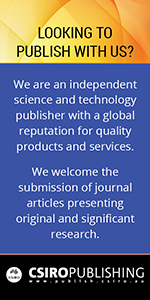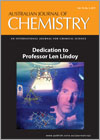
Australian Journal of Chemistry
Volume 70 Number 5 2017
Dedication to Professor Len Lindoy
CHv70n5_FOCelebrating Professor Len Lindoy’s 80th Birthday
The foreword to this special issue dedicated to Professor Len Lindoy provides a biographical introduction and an account of his distinguished career. It also summarises the articles in the issue, which have been contributed by Professor Lindoy’s many friends and collaborators in Australia and around the world.
CH16180Synthesis of a Novel Dibenzylamide Derivative of p-tert-Octylcalix[4]arene and its Extraction Properties Towards Noble Metal Ions
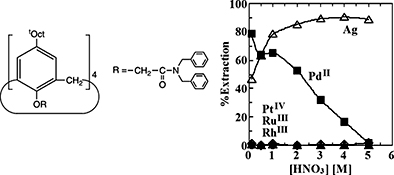
A N,N-dibenzylacetoamide derivative of p-tert-octylcalix[4]arene has been synthesised and its solvent extraction of precious metals in nitric acid media was investigated for determining the effects of extractant concentration and its contact time as well as nitric acid concentration in comparison with a N,N-diethylacetoamide derivative.
CH16467Endocyclic and Endo–Exocyclic Silver(I) Complexes of Thiaoxaaza Macrocycles: Crystallographic and NMR Studies
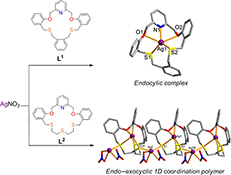
Thiaoxaaza macrocycles incorporating NO2S2 (L1) and NO2S3 (L2) donors were employed and their silver(i) nitrate complexation in solid and solution states was investigated.
CH16438Interpenetrated Double Pillared-Layer CoII MOFs with pcu Topology
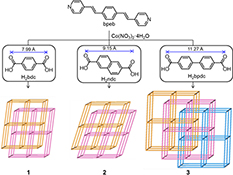
The influence of organic backbone on the bonding modes of the dicarboxylates, conformations of the of the long and flexible dipyridyl ligand, and pore size in isoreticular metal–organic frameworks formed by three double pillared-layer CoII metal–organic frameworks with a pcu topology is discussed.
CH16527Coordination Behaviour of 1-(4,2′:6′,4′′-terpyridin-4′-yl)ferrocene and 1-(3,2′:6′,3′′-terpyridin-4′-yl)ferrocene: Predictable and Unpredictable Assembly Algorithms
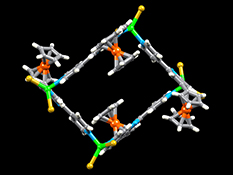
1-(4,2′:6′,4″-Terpyridin-4′-yl)ferrocene offers a fixed V-shaped N,N″-donor set, but this does not lead to a predictable assembly algorithm; polymer and metalloamacrocycle formations compete. Similar competitive behaviour is observed in coordination assemblies based on 1-(4,2′:6′,4″-terpyridin-4′-yl)ferrocene, with the greater conformational flexibility of the latter adding to the non-predictability of the assembly process.
CH16547Synthesis and Structures of Rare Earth 3-(4′-Methylbenzoyl)-propanoate Complexes – New Corrosion Inhibitors
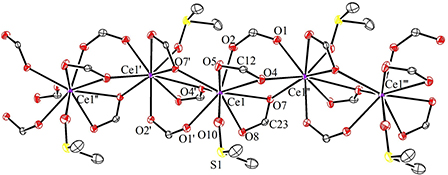
A series of rare earth (RE) 3-(4′-methylbenzoyl)propanoate (mbp–) complexes [RE(mbp)3(H2O)] (RE = Y, La, Ce, Nd, Ho, Er) have been prepared by either metathesis reactions between the corresponding rare earth chloride and Na(mbp) or protolysis of rare earth acetates by the free acid.
CH16584Structural Systematics for Lanthanide(III) Systems: Interactions of the Achiral Hexamminecobalt(III) Cation with Tris(dipicolinato)lanthanate(III) Anions
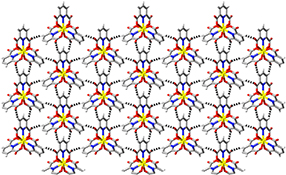
Structures of [Co(NH3)6][Ln(dipic)3] hydrates have been analysed in terms of the weak interactions occurring between the achiral cation and the chiral anions.
CH16556Molecular Assemblies and Spin-Crossover Behaviour of Cobalt(ɪɪ) Complexes with Terpyridine Incorporating Different Nitrogen Positions in Pyridine Rings
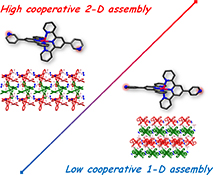
Cobalt(ii) complexes with terpyridine-type ligands, [Co(n-pyterpy)2](ClO4)2 (n = 3 (1), 4 (2)), show different molecular assemblies depending on the nitrogen position in the pyridine substituent. The cooperativity estimated from the magnetic behaviour reflects their assembly nature.
CH16492Evaluation of Methanol Induced Free Radicals in Mice Liver
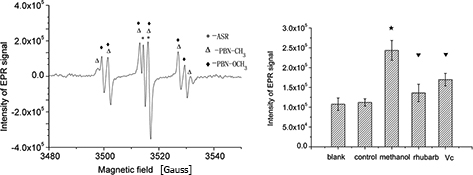
In this work, oxidative stress (OS) models of methanol in mice were successfully established. The experimental results clearly demonstrated that methanol could stimulate the production of hydroxyl radicals in the liver of mice to induce OS. Rhubarb and vitamin C were found to have a protective effect on the liver of mice under acute OS.
CH16614Synthetic Models for Nickel–Iron Hydrogenase Featuring Redox-Active Ligands
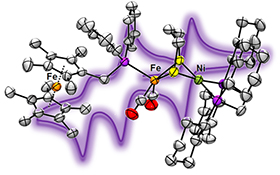
Nickel–iron hydrogenases produce and consume hydrogen using elaborate electron and proton transport machinery. Although synthetic modelling of nickel–iron hydrogenases has developed rapidly, it has largely ignored aspects of substrate transfer. Reported here are nickel–iron mimics bearing redox-active ferrocenyl ligands, these trinuclear systems representing advanced models of the native enyzmes.
CH16648Transition Metal Thiocyanate Complexes of Picolylcyanoacetamides
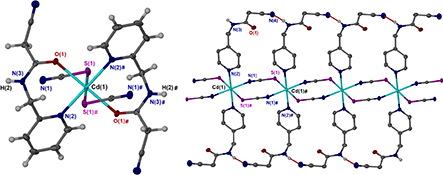
The transition metal complexes of picolylcyanoacetamides with thiocyanate are presented. Discrete tetrahedral, octahedral, and polymeric structures were isolated, and for cobalt(ii) complexes the magnetic susceptibility was measured.
CH16620Rage Against Conformity: Ruthenium(ɪɪ) Bisterpyridine Complexes Respond to Crystal Engineering Instructions with Whelming Results

Functionalised ruthenium(ii) bisterpyridine complexes refuse to obey crystal-engineering hydrogen-bond instructions.
CH16565Weak Intermolecular Forces, but High Melting Points
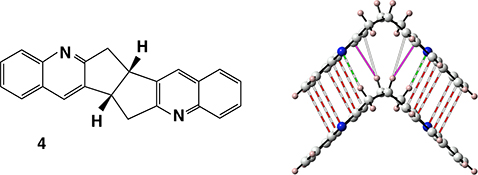
Racemic 4 melts above 350°C despite its low molar mass and absence of Pauling hydrogen bonding. X-Ray and Hirshfeld surface analyses reveal excellent complementarity between homochiral molecules of 4, and layers of opposite handedness are linked by the aza-1,3-peri hydrogen interaction. Weak intermolecular forces are discussed in context of the Lipinski ‘rule of 5’ solubility criteria.
CH16555In Situ Spectroelectrochemical Investigations of RuII Complexes with Bispyrazolyl Methane Triarylamine Ligands
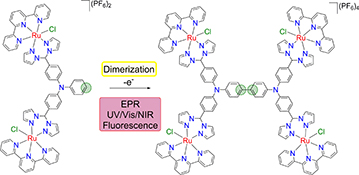
Two new triarylamine-based ligands containing the bispyrazolylmethane moiety and their RuII terpyridine complexes exhibit interesting electrochemical and spectroscopic properties. In particular, formation of the triarylamine radical cation leads to an electrochemically induced dimerization process.
CH16639Salicylaldehyde Hydrazones: Buttressing of Outer-Sphere Hydrogen-Bonding and Copper Extraction Properties
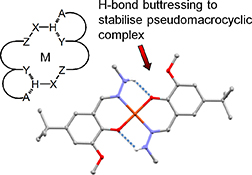
Electron-withdrawing or hydrogen-bond accepting groups increase the strength of salicylaldehyde hydrazone Cu extractants by three orders of magnitude.
CH16663Engineering Isoreticular 2D Metal–Organic Frameworks with Inherent Structural Flexibility
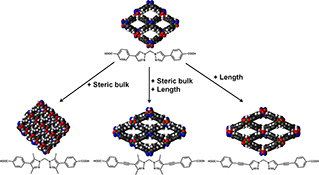
The chemical mutability of metal–organic frameworks (MOFs) is an advantageous feature that allows fine-tuning of their physical and chemical properties. Herein, we report the successful isoreticulation of a MOF by modifying the steric bulk and length of the original ligand separately and in combination.
CH16674Oxidation of Cobalt(II) Bispidine Complexes with Dioxygen
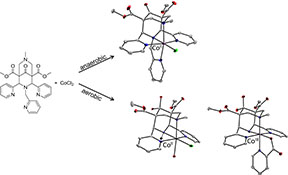
The current study presents various CoII bispidine complexes, including a complex with L1 that reacts with dioxygen to produce a CoIII product with the N3-monodeprotonated tetradentate bispidine fragment and a coordinated picolinate originating from L1.
CH16678Syntheses and Structure Investigations of 3d Transition Metal Complexes with a Flexible N4O2-Donor Hexadentate Schiff-Base Ligand
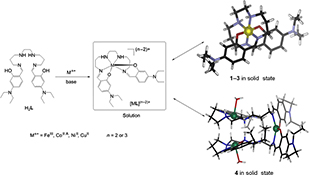
The syntheses and structure investigations of four new 3d transition metal complexes with a flexible N4O2-donor hexadentate Schiff-base ligand are described. The molecular structures of the FeIII, CoIII, and NiII mononuclear complexes demonstrate distorted octahedral coordination geometry. The CuII complex shows a trinuclear structure.
CH16710Synthesis of Two 2,2′-Bipyridine Containing Macrocycles for the Preparation of Interlocked Architectures
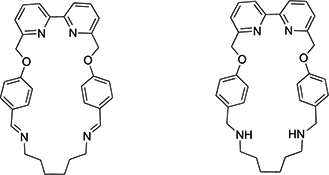
The synthesis and characterisation of two 28-membered, 2,2′-bipyridine-containing macrocycles is reported.
CH16673Co-Crystallisation of 1,4-Diiodotetrafluorobenzene with Three Different Symmetric Dipyridylacetylacetone Isomers Produces Four Halogen-Bonded Architectures

The co-crystallisation of the linear halogen-bond donor 1,4-DITFB with three symmetric dipyridylacetylacetone isomers produces four different halogen-bonded networks.
CH16716New Heterodinuclear Zn/Ln (Ln = Gd, Tb, Er, Yb) Complexes of Hexadentate N,N′-Bis(3-alkoxy-2-hydroxybenzyl)cyclohexane-1,2-diamines: Synthesis and Structure

N,N′-Bis(3-alkoxy-2-hydroxybenzyl)cyclohexane-1.2-diamines (alkoxy = OCH3, OC2H5) form, with zinc acetate and lanthanide nitrate (Ln = Gd, Tb, Er, Yb) in methanol, the isostructural heterodinuclear complexes [Zn(L)(µ-CH3COO)Ln(NO3)2]. In these complexes, zinc(ii) is coordinated by an N2O3 donor set with trigonal bipyramidal geometry, whereas the lanthanides possess an O9 coordination environment in a capped square antiprismatic configuration.
CH16538Two New Oxovanadium(IV) Compounds Containing Amino Acid Schiff Base and 1,10-Bathophenanthroline Ligands: Syntheses, Crystal Structures, and In Vitro Evaluation of the Anticancer Activities
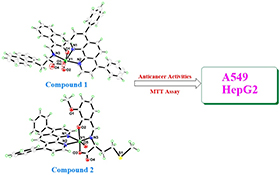
Two novel oxovanadium(iv) compounds were synthesised and characterised. Their crystal structures and anticancer activities were studied. Compound 2 was found to have strong anticancer activities towards A549 (human lung carcinoma cell line).
CH16647Investigation into the Use of a Diaminodihydroxyaryl Derivative of Ethylenediaminetetraacetic Acid (DAHA-EDTA) for Cu-64 PET Imaging and Radioimmunotherapy
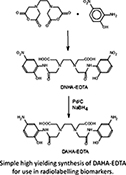
The synthesis of DAHA-EDTA is a simple two-step high-yielding process. Its use for Cu-64 radiolabelling of the B72.3 whole antibody was investigated. The biodistribution in LS174t tumour-bearing mice showed high uptake in the tumour and rapid clearance from the blood within 24 h.
CH16586Structure and Magnetic Studies on a Series of Two-Dimensional Iron(II) Framework Materials with Varying Ligand Characteristics

A series of bis-pyridyl linkers are combined with the {Fe(NCS)2} motif to form a family of seven coordination polymer analogues with a stacked (4,4)-grid topology. The resulting FeII coordination environment is well established to give rise to spin crossover behaviour, yet these materials remain in the high-spin state to low temperature. This comparative study provides insight into the critical influence of framework structure on producing spin crossover.
CH16577Crystal Structure of a Heterometallic Luminophore: The RuII Complex of a Ferrocenyl-Terpyridine with a Flexible Linkage
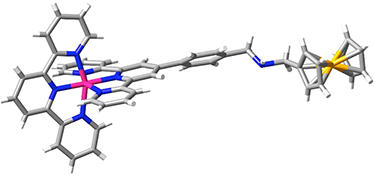
Crystal structure determination on the mixed ligand complex [Ru(tpy)(L1)](ClO4)2 (tpy = 2,2′:6′,2″-terpyridine; L1 = 4′-(ferrocenylmethylaminomethylphenyl)terpyridine) shows the ferrocenyl group to be located as remotely as possible from the RuII centre. This may explain the fact that emission from the RuII centre is detectable even at room temperature in solution.
CH16552Supramolecular Assemblies of Cucurbit[10]uril Based on Outer Surface Interactions
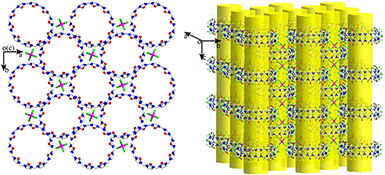
Two Q[10]-based supramolecular assemblies were prepared via different approaches, and these Q[10]-based supramolecular assemblies possess porous features that suggest that Q[n]-based compounds could be used to manufacture molecular sieves and sensors and applied in absorption and separation technologies
CH16557Proton Conductivity of Graphene Oxide on Aging
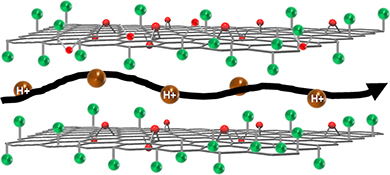
The proton conductivity of graphene oxide has been reduced by 25 % after three years of aging due to the decrease in oxygen content and interlayer distance.



